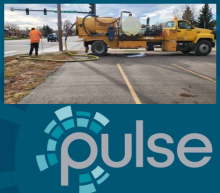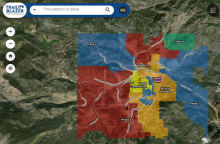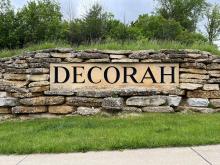
Over 140 municipalities in Colorado have opted out of a state law (SB-152) that prevents local governments from investing in broadband infrastructure. With overwhelming support from voters on Election Day last month, Denver, Berthoud, and Englewood became the most recent Colorado communities to bail on SB-152 in the 15 years since Qwest (now CenturyLink) and Comcast successfully lobbied for passage of the anti-local authority bill designed to protect their profits.
While Denver, Berthoud, and Englewood residents ponder next steps, a number of other Colorado communities have already built, or are in the process of building, municipally-owned broadband networks, the most successful example being the NextLight Fiber-To-The-Home (FTTH) network in Longmont.
NextLight, which began building its award-winning FTTH network in 2014, now offers Longmont’s 90,000 residents access to gigabit (1,000 Mbps) service and has surpassed a 50% take rate.
Three other communities in the Front Range region of Colorado are now on the front lines of building municipal broadband networks.
Loveland
Loveland, a city of 76,700 situated in a 25.5 square mile valley at the entrance to Big Thompson Canyon, opted out of SB-152 with 82% voter approval in 2015, a year after Longmont began building its fiber network 17 miles south of the “gateway to the Rockies.”
Over the past five years, the Loveland Water and Power Department has been planning, and now building, its own Pulse fiber network.
To finance the project, city officials opted to issue $95.5 million in bonds. The bonds are backed by Loveland’s electric utility, which serves 37,500 residential and commercial accounts.
Just 13 months into an expected four-year city-wide build-out, Pulse now has a heartbeat. But it hasn’t exactly been a fairy tale story in Loveland. There was considerable debate and controversy around financing the construction, which came to a head when the City Council ultimately decided to issue bonds without holding a special election.
Loveland City Councilman Don Overcash, for example, was initially opposed to Loveland getting into the broadband business, especially with Comcast and CenturyLink offering service in the area. But after closely studying the issue for two years, he had a change of heart, realizing something many other communities across the nation have come to lament.
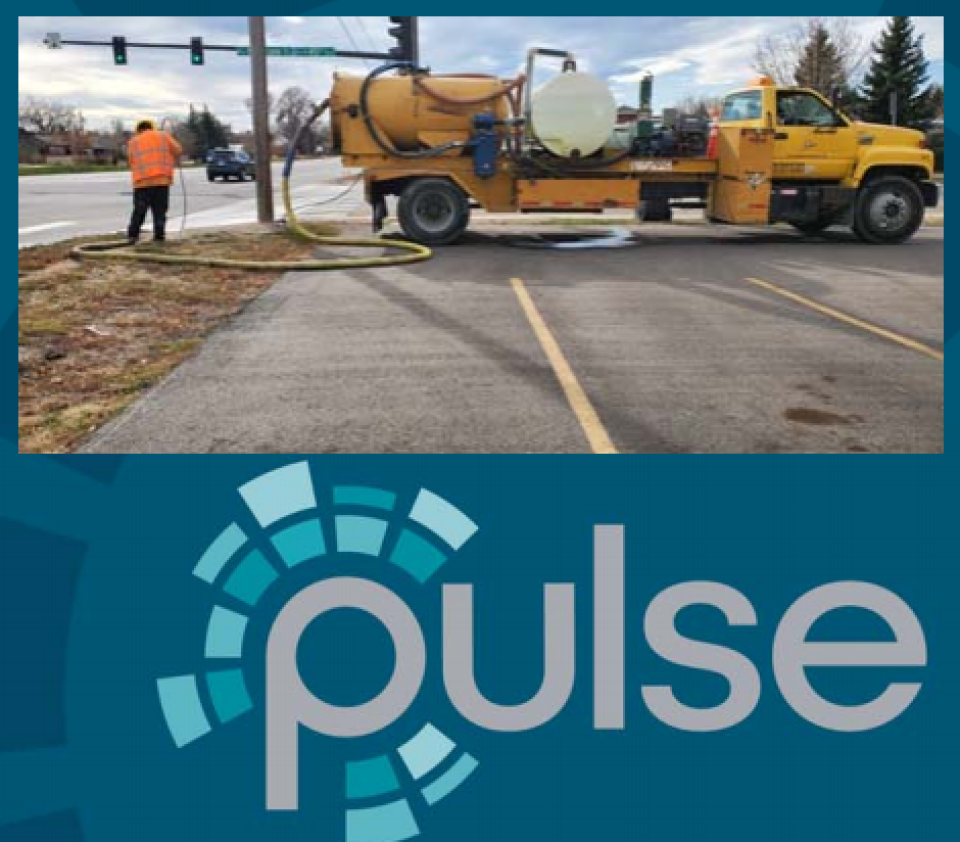
“We were assured that the risk to citizens was extremely minimal,” Overcash said. “I spent a lot of time, and not just council time, over the past two years coming to this point.”
Project planners did look for ways to contain costs. To streamline deployment and save money, the city partnered with nearby Fort Collins and Estes Park, two neighboring communities developing their own municipal fiber networks, to split the cost of the backhaul connection to the Internet backbone.
Pulse opponents, however, are still not happy with how the project was financed. Taxpayers Protection Alliance Foundation reporter Johnny Kampis published an op-ed in The Center Square earlier this month (December 16), giving Loveland resident Linda Rosa an opportunity to register her complaint about the financing: [the City Council] “can take on debt without voter approval. It denied voters of their right to vote on this debt.”
Kampis also spoke to Loveland Mayor Jacki Marsh. A supporter of the city’s broadband initiative, Marsh acknowledged a bit of regret about not holding a special election on the debt financing: “I personally think we made a mistake in not taking it to the voters.”
Mayor Marsh’s qualms notwithstanding, it should be noted that there is nothing unusual with communities deciding for themselves when a referendum is appropriate. Local governments exist to decide how to allocate taxpayer dollars. Very few of these decisions - when to build a bridge or build a new electric substation, for example - are subject to a referendum vote.
In any case, Pulse construction is moving forward. The Big Thompson Elementary School (BTES) and the Thompson School District have already been connected to the fiber network, bringing gigabit speeds to a school system where the previous connection had such low bandwidth that teachers and students only had limited access to learning software.
“The district no longer has to maintain two different kinds of [I]nternet connections to our schools, easing processes and saving us money,” the school’s Chief Technology Officer Matt Kuhn told North Forty News earlier this fall.
Pulse also recently launched its high-speed Internet and voice services for local businesses. The standard business plans include symmetrical speeds, unlimited data with no caps or throttling, 24/7/365 technical support, and no long-term contracts. The plans range from 100 Megabits per second (Mbps) for $110 per month up to one Gigabit per second (Gbps) for $450 per month. For businesses with high-bandwidth needs, one to 10 Gbps options are also available.
“Reliable [I]nternet access is a top priority for both local companies and for those looking to relocate here,” Loveland’s economic development director Kelly Jones said in a press release announcing the launch. “Growing employment and business opportunities to sustain a healthy economy is our primary focus. Community-owned [I]nternet will allow us to bring more jobs to the city and help more Loveland businesses succeed. We can’t wait to see Pulse business service in action.”
On the residential side, subscribers can get 1 Gbps symmetrical for $74.95 a month with free installation, no contract required, managed Wi-Fi, and no data caps.
As of a month ago, nearly 585,000 feet of conduit and approximately 982,000 feet of fiber have been installed. Boring is about 27% finished as the project is “currently meeting schedule and budget expectations,” according to a recent update given by project managers at a Loveland Communication Advisory Board meeting.
Pulse expects to capture 42% of the market when the build-out is complete, although so far the take-rate hovers at 22%. It often takes a few years after the service is available in a given area to hit target penetrations.
Fort Collins
Just 14 miles north of Loveland, a 30-minute drive up Route 287, is another Fiber-to-the-Home (FTTH) network under construction.
In 2017, Fort Collins voters said yes to a ballot question that sought approval to build a city-wide FTTH network, despite the nearly $1 million spent by the region’s big private Internet Service Providers (ISPs) lobbying against the initiative. Two years later, city officials and project supporters gathered at the Lincoln Center to celebrate the official launch of Fort Collins Connexion.
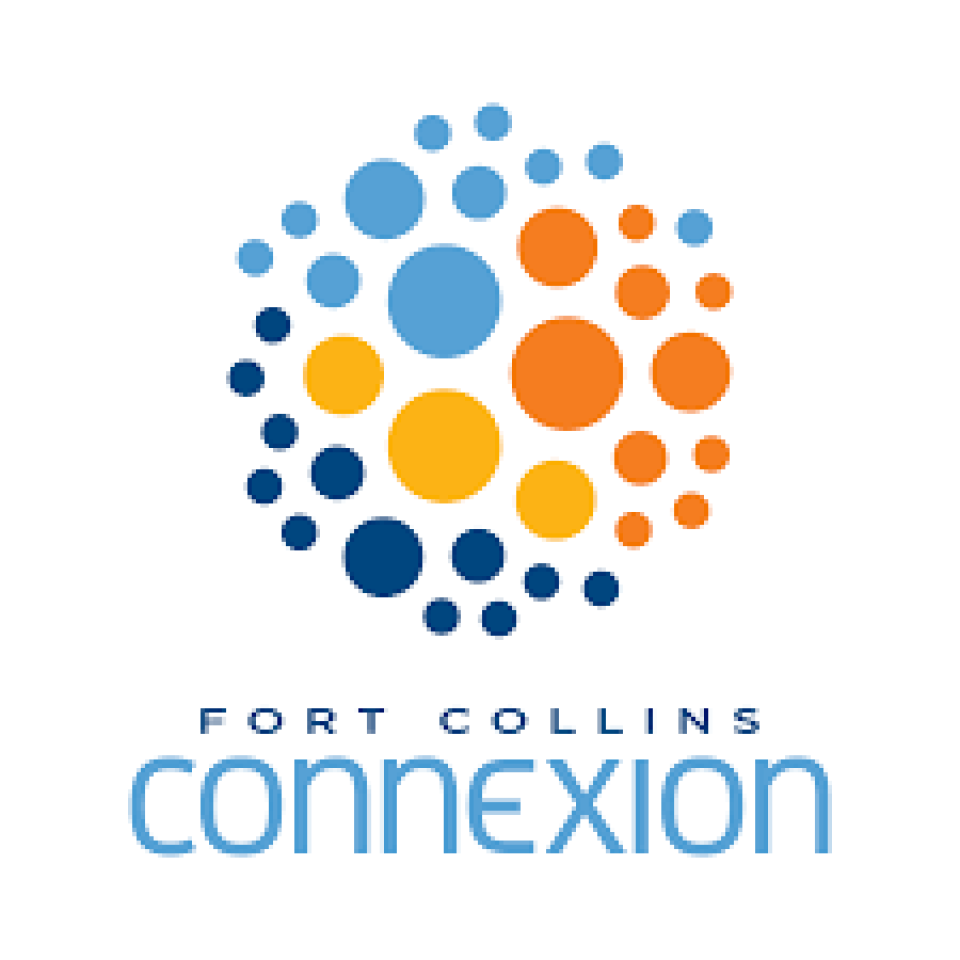
To finance the construction of the network, Fort Collins issued $142 million in revenue bonds. Project consultants have estimated that operating income for the network will be in the black by its third year and on track to pay off the debt in 14 years, provided Connexion is able to attain and sustain a 28% take rate. Very few projects achieve such a rapid payback - most take 4-6 years or more.
And while Fort Collins City Manager Darin Atteberry recently wrote in an op-ed published in The Coloradoan that “current Connexion customers are already experiencing the benefits of fast and affordable [I]nternet access,” it has not been without frustration for some of its leading proponents.
Colin Garfield, who led the citizen campaign for the ballot initiative, told The Coloradan: “I'm very disappointed by the shroud of secrecy that has outlived most of its purpose by this point. There has been a clear demarcation drawn between the original brand launch in 2018 and now, in terms of transparency and engagement.”
When we spoke to Garfield in December, he was “really impressed with the service so far” but his main complaint stands: “public outreach has been frustrating.”
Garfield noted that Connexion officials thus far have not shared information on how many residents have subscribed for service, nor have maps been published that show which neighborhoods have been connected so far and when other neighborhoods can expect to get service.
Fort Collins resident Glen Akins, another leading supporter of the project, added that without that mapping data and a clear neighborhood-by-neighborhood timeline, “it affects people who are making household budget decisions, which is a problem because who wants to sign a new contract with Comcast and then eat disconnection fees [if Connexion service becomes available while a household is still under contract with Comcast].”
For their part, Connexion officials, while promising to share more information as construction moves forward, countered that it’s difficult to walk the fine line between sharing internal information with the public and putting out information that could help its corporate competitors Comcast and CenturyLink, which could ultimately threaten Connexion’s survival in a duel with the duopoly.
In its first quarterly report published in April, Connexion conceded that there had been construction delays due to a difficult winter as well as the challenges of integrating the Connexion billing system with the billing system of the city’s other utilities. The most recent quarterly report revealed that Connexion had spent approximately 49% of its construction budget, which, planners say, is right on target.
Complete Colorado’s on-going coverage of the project, however, takes a less rosy view. Last week they reported that “for the third straight quarter Fort Collins continues to show slow progress in getting its municipal broadband effort - Connexion - up and running. In fact, the numbers continue to get worse toward years’ end, with operating revenues nearly $3 million below budget, almost double the loss the self-supporting enterprise venture saw in the second quarter and seven times worse than the first quarter.” The first years of a capital intensive network investment are generally quite challenging, so these numbers should not be considered too surprising.
Garfield and Akins, who follow this much more closely than Complete Colorado, continue to believe the project will prove to be successful when it’s all said and done. They can also appreciate Connexion’s concerns with deep-pocketed competitors. However, at this point, Garfield said, it doesn’t make sense not to share take-rate information or maps that delineate the projects’ progress because that information Comcast can easily figure out by simply adding up which of their customers have switched service.
“Connexion service is rock solid,” Akins said. “I just wish more people had it at this point. What will make it or break it is how well you market it,” which so far leaves a lot to be desired.
Even with some of the bad luck Connexion has encountered, including sustained, difficult weather to build in, nearly all citywide municipal fiber networks we have examined have crossed the 30% take rate threshold within a few years of launching. Expanding beyond that is generally what requires more marketing savvy and community support.
One new service Connexion quietly launched is Connexion TV, which allows subscribers to stream their favorite shows, movies and sports on app-based devices including Apple and Android devices, Amazon Fire TV and FireStick. The service doesn’t yet have Roku support but does give Connexion TV subscribers access to Altitude Sports, a popular local sports channel. “We are the only provider that carries that in Fort Collins,” said Connexion’s Broadband Marketing Manager Erin Shanley, adding that the service also features a cloud-based DVR, allows subscribers to stream up to five shows on five different devices, and offers video on demand and access to thousands of movies.
“This new service is important because there is power and value in bundle services. You want to have comparable video products (to what Comcast or CenturyLink offers). You are at a disadvantage if you offer Internet [access] and phone but no TV. It’s also appealing to those who want to cut the cord but might be missing some of their favorite programming,” which, Shanley said, is another reason Fort Collins’ residents should still be fired up with enthusiasm for Connexion.
Estes Park
In a small town at the eastern entrance of Rocky Mountain National Park, a little over 40 miles southwest of Fort Collins and 30 miles west of Loveland, it was an actual fire that highlighted the importance of reliable and resilient telecommunication, especially for emergency services.
The municipal fiber network now under construction in Estes Park is named, appropriately enough, Trailblazer Broadband, owned by Estes Park Utilities.
When the East Troublesome fire crossed the Continental Divide into Rocky Mountain National Park and exploded east in the direction of Fort Collins, Trailblazer Broadband network architect Josh Cramer was concerned the blaze could reach Estes Park and melt the town’s main Internet line and emergency communication lines. While Estes Parks has four Internet Service Providers (ISPs), there was only one connection to the Internet backbone, a reminder that the Internet doesn’t just exist in virtual reality. It is made up of physical infrastructure.
During the floods of 2013, it was raging water that cut off the town’s communication lines. Cramer didn’t want the same thing to happen again and so, as was reported by The Colorado Sun, he reached out to regional power company officials, local governments and ISPs to see if they would help link Estes Park to one of Project Thor’s main hubs in nearby Granby, which meant finding available fiber between Estes Park and Granby and getting permission from multiple agencies, utilities and fiber network owners. That would normally take months or perhaps years to make that happen. But with the fire scorching the area, it led to a spirit of cooperation that included 16 different organizations to ensure Estes Park has more than one redundant line.
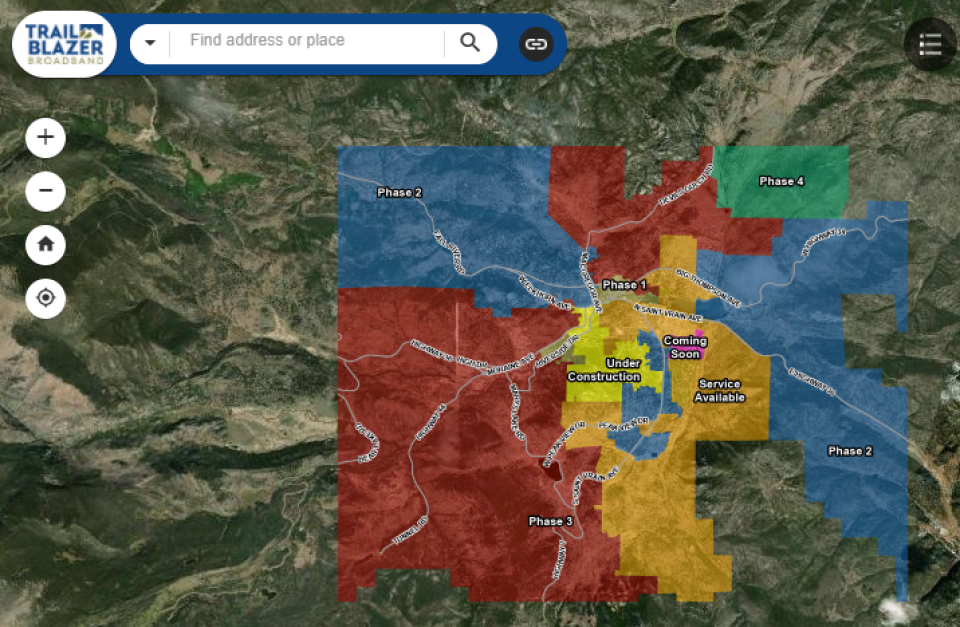
Although the fire burned more than 170,000 acres, making it the second largest fire in Colorado's history, the flames never reached Estes Park. What rose from the ashes, however, was a more resilient fiber network with a new loop through Estes Park, connecting the town to Fort Collins’ municipal fiber network, which itself is connected to Project Thor’s main hub in Denver.
This new more resilient infrastructure is what Trailblazer Broadband is relying on now as the town’s utility is building out a FTTP network to the town’s 6,310 residents.
Unlike the issues that bedevil Connexion in Fort Collins, the construction of Trailblazer Broadband has been much more transparent. On the Trailblazer Broadband website, the construction schedule with a map indicating which neighborhoods have access to service and when other parts of town are scheduled to be phased in is easy to find.
In a recent op-ed, Estes Park Mayor Wendy Koenig, a leading advocate for the building of the network, expressed her enthusiasm with the roll-out:
The instant my computer comes on line, I think about the enormity of the undertaking occurring behind the scene. About the area of service of the utility being larger than the combined land area of Fort Collins, Loveland and Longmont. That the reconfigured utility encompasses light, power and communication services. With total build-out likely to take up to five years to complete. Absolutely amazing, yes? I know that now while video conferencing, there will be no notice of an unstable Internet connection. Nor will the video freeze on the computer screen. I possess the capacity for meeting the video demands that the pandemic is making on me, both as a mayor with obligations to fulfill and as a grandmother with grandkids I love in Lakewood and Slovakia. And, I am beyond thrilled about the way … the townspeople of Estes Park stepped up to connect the dots so everyone wins.
The key to the early success of Trailblazer Broadband has been the transparency and outreach officials have demonstrated as the construction unfolds.
“They are publishing maps,” notes Fort Collins Connexion supporter/critic Glen Akins. Colin Garfield, who has so far been disappointed with Connexion’s outreach efforts, praised the roll-out in Estes Park, adding that while Trailblazer Broadband “operations are smaller (than Fort Collins Connexion) and has less competition, it’s incredibly encouraging to see the take-rates and progress there.”
“The construction schedule map is what we want in Fort Collins,” Garfield said.
Though they are close in proximity, Loveland, Fort Collins, and Estes Park each have their own unique set of challenges with varying opinions from citizens. But, there is one thing all three communities have in common: as more cities and towns across the state weigh whether to opt out of SB-152 and build their own municipal broadband networks, what happens in Loveland, Fort Collins and Estes Park may very well spur – or halt – the FTTH momentum now underway in Colorado.
Correction: An earlier version of this article erred in stating Loveland Pulse issued $95.5 million in bonds, the correct figure is $95.4 million. The service is priced at $74.95 (not $60 as we mistakenly published) and does not include an email address but does include managed Wi-Fi.
